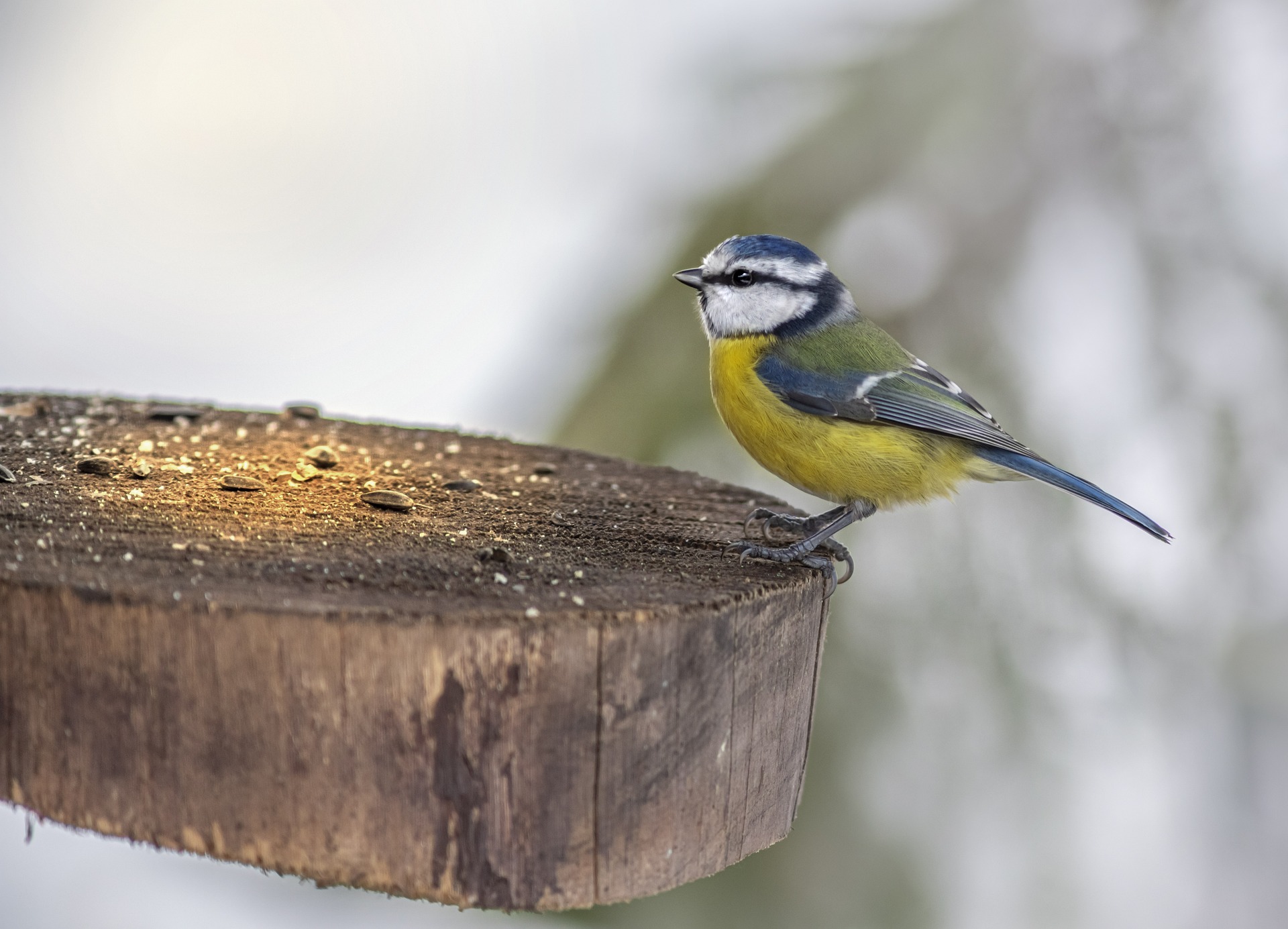The Blue Tit, scientifically known as Cyanistes caeruleus, is a small and colorful passerine bird commonly found across Europe and parts of Western Asia. Here are some key features and characteristics of the Blue Tit:
- Appearance:
- Size: The Blue Tit measures about 12 centimeters (4.7 inches) in length, with a wingspan of 17 to 20 centimeters (6.7 to 7.9 inches).
- Color: This bird is easily recognizable due to its vibrant plumage. It has a blue cap, white cheeks, and a black eye stripe running through the eyes. The back is greenish, the wings and tail are blue, and the underparts are yellow with a hint of green.
- Markings: The Blue Tit also has a distinctive black collar and a black stripe running down the middle of its belly.
- Habitat:
- Blue Tits inhabit a variety of environments, including deciduous and mixed woodlands, gardens, parks, and hedgerows. They are particularly fond of areas with a good supply of trees and shrubs.
- They are adaptable and can thrive in both rural and urban settings, often frequenting bird feeders in gardens.
- Distribution:
- The Blue Tit is widespread across Europe, from the British Isles to the eastern parts of Russia. Its range extends into parts of North Africa and Western Asia.
- They are resident birds in most of their range, meaning they do not typically migrate.
- Behavior:
- Foraging: Blue Tits are active and agile foragers, often seen hopping and flitting about in trees and bushes in search of food. They primarily feed on insects and spiders, especially during the breeding season. In autumn and winter, their diet includes seeds, berries, and nuts.
- Caching: Like other tits, Blue Tits may store food to eat later, a behavior known as caching.
- Social Structure: Outside of the breeding season, Blue Tits are social birds and may join mixed-species foraging flocks with other small birds, such as great tits, long-tailed tits, and goldcrests.
- Breeding:
- The breeding season for Blue Tits starts in April. They typically have one brood per year, but may occasionally raise a second brood.
- Nests are built in tree holes, nest boxes, or other cavities, lined with moss, feathers, and wool. The female lays a clutch of 7 to 13 eggs, which she incubates for about two weeks.
- Both parents share in feeding the chicks, which fledge after about three weeks.
- Vocalizations:
- Blue Tits have a wide variety of calls and songs. Their typical song is a high-pitched, rapid trill or “tsee-tsee-tsee” sound.
- They also produce a range of other calls, including scolding noises used to warn of predators and contact calls to communicate with other members of their flock.
- Conservation Status:
- The Blue Tit is classified as Least Concern by the IUCN, thanks to its large population and wide distribution.
- It is one of the most common and well-known garden birds in Europe, frequently seen at bird feeders.
- Interesting Facts:
- Blue Tits are known for their acrobatic feeding behavior, often hanging upside down to reach food.
- During the winter, Blue Tits can form communal roosts in nest boxes or dense vegetation to conserve heat.
In summary, the Blue Tit (Cyanistes caeruleus) is a small, brightly colored bird renowned for its agility and adaptability. Found across a wide range of habitats in Europe and parts of Asia, it is a familiar and welcome visitor to gardens and woodlands alike. Its vibrant plumage, varied diet, and social behaviors make it a fascinating species to observe throughout the year.
Visited 757 times, 24 visit(s) today
Views: 954
Subscribe to the newsletter:
